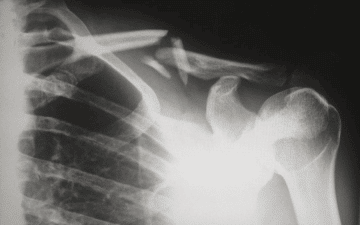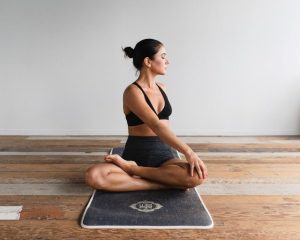Many people tend to ignore shoulder pain as they relate it to usual exhaustion, especially after a tough session at the gym or a long day at work. While sometimes it can be a minor issue, knowing the underlying cause and fixing it is very important.
Shoulder pain might be a minor thing for some people. But for others, even the simple task of reaching for something or carrying a bag can be excruciatingly painful and affect how you live your life. If this persists, some people experience depression and worthlessness, as they might be unable to perform their job and earn a living
Causes of Shoulder Pain
Various factors can cause shoulder pain with some noticeable and self-diagnosable, while for others, you'll need to visit a doctor to go through several tests. The following are the primary culprits:
- A condition called avascular necrosis is caused by blood flow limitation that results in dead bone tissue.
- An injury causes it to your Brachial plexus or Rotator cuff.
- You can have an inflammation of your joints, referred to as Rheumatoid arthritis, Septic arthritis, or Bursitis.
- A broken arm or collarbone.
- A dislocated, separated, or frozen shoulder.
- You can be suffering from Osteoarthritis, which is a disease that results in the breaking down of joints.
- Injury from a car accident, such as whiplash injury
- A sports injury
Whatever the cause of your shoulder pain, it’s crucial to address it right away so proper therapy and medication can be given by a doctor. If you suffered a whiplash injury from an accident or from playing a sport, it’s essential to consult a whiplash doctor to treat such injuries. Treatment for this type of injury may include surgery in severe cases.
Symptoms of Shoulder Pain
A couple of signs should be a red flag to realizing that you do have a shoulder problem. If you notice the following, then be ready to take the necessary actions:
- Persistent pain in the shoulder region
- A problem when trying to rotate your shoulder
- Discomfort when you lift something heavy
- A swell near the shoulder region
- Sharp pains at the back of your neck
- A stiff shoulder
- Limited range of motion
- Weakness
- Tingling or numbness
- Clicking or popping sound when you try to move your shoulder
The symptoms may go away with pain medication. But if the symptoms persist, it can indicate a much more severe problem. This must be addressed immediately to prevent the condition from worsening. The condition may develop into long-term chronic pain or disability if not attended to immediately.
Diagnosis for Shoulder Issues

If there is an external indication, such as a swell, it will be easier to determine the underlying issue. However, most of the shoulder conditions require a visit to an orthopedist to run a couple of tests so that you can know what the problem is. The several tests that you’d go through include:
- Physical movements usually guided by a physiotherapist to locate where the pain arises from
- An x-ray to see the alignment of the joint or any other bone issue.
- Blood tests in case there are any cases of arthritis.
- An ultrasound for the soft tissues, tendons, and muscles if there is a swell
- An MRI for complex conditions.
- Medical history review wherein your doctor will try to discover when the pain started and what triggers and worsens it.
Treatment for Shoulder Pain
It is well-advised to go for options that prevent shoulder pain. One of the well-known ones is to put a bag of ice cubes on your shoulder to avoid shoulder pain after workout. Other than that, there are multiple ways to treat shoulder pain with the best being physiotherapy.

Shoulder Pain Exercises
Physiotherapists fix many shoulder problems as they have a unique series of exercises and stretches for shoulder pain. There is a wide range of activities that you can use to solve your issue, but opting for the best ones will significantly impact your condition. The following are the top 6 exercises for quick relief of shoulder pain;
Neck Release
This exercise is effective for shoulder pain up to neck region, and the movements are mostly done from the neck area.
How to do it: Stand in a straight posture and ensure that your back is in the right posture, and your head is straight and facing forward. Warm-up by making a circular movement with your head. Let the exercises increase in diameter as you stretch further in moderate pressure. Once the warm-up is done, you can stretch the neck to particular directions and emphasize where the pain is a lot. You can start with three seconds to the front, three to the back, the left and the right, and all compass directions.

Seated Twist
It’s mainly for shoulder pain from sitting at a desk. Usually common in people who work in offices.
How to do it: Grab a chair that has a 90 degrees’ backrest and place it in a cleanroom. Comfortably sit on the chair with your back maintaining the backrest angle, put your palm on your laps, and let the region behind the knee form a right angle. Hold the right side of the chair with your right hand and precisely where the seat and right chair leg that's at the back are assembled.
Support yourself by putting your left hand on the side of your right knee. Stretch your upper body to the right as far as you can to put pressure on your left shoulder. Repeat the same on your right shoulder. You can also do a similar exercise while seated on the floor.

Stretching Across the Chest
If you have shoulder pain getting worse, this is the exercise you should begin with to get it back in position, especially if it is a dislocation.
How to do it: You first have to be in an open room free from any objects that might object to your movements. Stand straight with your feet together and your arms on your hips. Breathe in and out, then raise your right hand forward as if you are pointing something in front of you. Warm-up by swaying your hand from right to left slowly to take off any tensions on your shoulders.
After you feel some comfort, move that hand to the left as far as you can. Support the hand with your left hand, holding it at the elbow with your palm. Gently direct the hand to the furthest left and back to the initial starting position, to and fro to feel the pressure at the shoulder. Do the same with your left hand.
Shoulder Circles
This particular exercise heavily relies on the weight of your hands to provide resistance to the movements.
How to do it: There is a variety of ways that you can perform this exercise. The first one involves standing straight with your feet together and your hands on your hips. Raise your right hand to the right to form a 90 degrees angle from your ribs and armpit. Begin to draw imaginary small circles in the air as you progress to make bigger circles provided you are comfortable.
The other way of doing it is by grabbing a chair or any supported item and then standing beside it. Hold the chair with your left hand (please ensure that you won't be forced to bend to reach for the support; it should be tall enough such that you can comfortably support yourself). Suspend the right hand downwards and begin to draw imaginary circles while facing the floor.
Child’s Pose
Remember when you used to crawl and struggle to get up? That particular position is a great shoulder pain exercise.
How to do it: Go to an open space and place your exercise mat on the floor. In a crawling position, move your hands slightly forward to be further than your head. While keeping your hands straight, raise your knees from the ground to get support from your tiptoes and lift your butt in the process. Go back to the crawling position, rest your hamstring on your cuffs, and move forward and place your forehead to the floor to stretch the shoulders.

Doorway Shoulder Stretch
It is challenging to deal with a frozen shoulder. If you want to loosen the numbness, this exercise can work for you.
How to do it: Locate a wall opening that has no door and stand beside the corner of the wall, where the door is usually fixed. While facing the front side, raise your right hand to rest your elbow to your palm on that wall forming a 90 degrees angle down your armpits and ribs. Resembling the movement made by a door, move back and forth to allow the flood to flow correctly to your shoulders and regain functionality.

Note: Each exercise should be done from 5 – 7 seconds and with 3 – 5 repetitions. Ensure that you do not strain yourself to prevent further injuries to your shoulder.
Conclusion
Being aware of the best exercises for your shoulder pain is very important because you can do some of them on your own. You can also consider taking the best CBD gummies as your shoulder pain remedy since they are known to ease the pain. It would be best if you opted to take preventing measures rather than be forced to treat a complex shoulder issue.
Do you have shoulder pain? Have you tried any of the shoulder pain exercises? Leave a comment!
Author Bio:
Thomas Nemel is passionate about a healthy lifestyle and has got a strong background in athletics. He is one of the authors on gym-expert.com. He shares his interests through writing. Thomas’ goal is to inspire others to engage in sports activities.
Related reading
- Tooth pain after filling: 6 Ways to Manage the pain
- Surprising Natural Remedies for Chronic Pain: A Must Look
- Five exercises to reduce neck pain
- Stay Fit: Infrared Light Therapy for Arthritis Pain Relief
- TENS Machine for Labour Pain Management


